Scientists from UNAM are investigating black holes, unique formations at the center of galaxies like ours, from theoretical and the observational points of view.
The coordinator of Scientific Research, William Lee Alardín, explained that the studies are carried out in the institutes of Astronomy (IA), Physics (IF), Nuclear Sciences (ICN), Radio Astronomy and Astrophysics (IRyA), Mathematics (IM), Physical Sciences (ICF), and in the Center for Mathematical Sciences (CCM). "There are vocations towards the theoretical and the observational, but in this field everything is needed," he added.
Luis Felipe Rodríguez Jorge, prominent astronomer at UNAM, researcher and founder of IRyA, Morelia campus, and member of El Colegio Nacional, was among the first scientists to measure the mass of Sagittarius A, a very compact and bright structure located in the center of our galaxy, the Milky Way, which has a supermassive black hole; for the measurement he used radio astronomy techniques. In 1979 it reported a mass of five million times the mass of the Sun.
“During my doctoral thesis, in 1979, I published an article in which I studied the movement of gas around this black hole in the center of the galaxy. The movement was very fast and we came to the conclusion that a very large body was needed and we calculated a mass of five million solar masses,” he explained.
Lee Alardín explained that UNAM carries out an observational study of the properties of these black holes that reside in the center of galaxies, the supermassive ones; there is also research about the behavior of stellar-mass black holes and what they do when they collide and produce gravitational waves or have interactions with neutron stars.
In addition, UNAM has contributed with theoretical works that produce another series of phenomena that can be followed with various telescopes, and others to understand black holes as physical-mathematical objects and their use to better understand the theories of gravity and their relationship with quantum mechanics, as well as their use in cosmology, that is, large-scale maps of the Universe.
First Picture
Laurent Raymond Loinard, also a renowned researcher at the IRyA of UNAM, collaborated in the international consortium Event Horizon Telescope (EHT), in which approximately 200 scientists from 20 countries participated, managing to generate the first real image of a black hole.
Although this finding was not considered for the Nobel Prize in Physics this year, it certainly represents a complementary contribution that corroborates the existence of black holes.
On this, William Lee agreed and specified that the finding of the image, although it was not recognized by the Swedish academy, is related to the recently awarded Nobel Prize in Physics, since it is on the same subject.
Loinard explained that to obtain the image, the consortium used a network of eight radio telescopes around the world that observed the same point in the sky and captured signals that the group of 200 scientists converted into published images.
Thanks to this international study, the image shows a supermassive black hole, located in center of the Messier 87 (M87) galaxy, a giant elliptical galaxy located in the Virgo Cluster.
One of the eight instruments used in the research is Mexican: the Large Millimeter Telescope (GTM) “Alfonso Serrano,” a radio telescope that is managed by the National Institute of Astrophysics, Optics and Electronics (INAOE), located at 4,600 meters above sea level in Cerro La Negra, and in which UNAM collaborates.
Nobel Prize in Physics
Laurent Loinard also referred to the 2020 Nobel Prize in Physics awarded to British mathematical physicist Roger Penrose, from the University of Oxford; German astrophysicist Reinhard Genzel, from the Max Planck Institute for Extraterrestrial Physics; and the American astronomer Andrea Mia Ghez, from the University of California in Los Angeles.
In an interview, he said: their studies are independent of each other. Penrose's contribution is from the seventies and completely theoretical, while that of Genzel, on the one hand, and Ghez, on the other, are more recent observations made with the support of large telescopes by two independent groups, one from Germany and the other from the United States.
In the past it was believed, from theory, that for a black hole to exist, spherical symmetry was needed around the star from which it formed, which was difficult to achieve in the real Universe.
“What Penrose did was to show that even without spherical symmetry, a singularity, that is, a black hole, can form under very general conditions. This greatly opened the door to the existence of black holes, because it showed that they do not need such peculiar conditions to form, but rather more general conditions,” explained Loinard.
Penrose, also theoretically, predicted that black holes have an event horizon, that is, a surface that surrounds them and that it is the limit within which nothing can escape, because it would have to move faster than light.
"This region that is within the horizon we cannot see, it is completely out of our reach, and the horizon is a gravitational frontier," he said.
On the other hand, and years later, Genzel and Ghez made observational contributions on the same topic, but in separate groups and thanks to access to large telescopes and sensitive infrared detectors.
“They developed certain infrared light detectors, and they needed large telescopes, with a lot of angular resolution, that is, with a very high level of sharpness. They achieved this with a new observation technique called adaptive optics and other more advanced interferometry techniques,” he said.
What they did to measure how much an object weighs in space is to see how things move in its environment. "You can calculate, for example, the mass of the Sun knowing how far the Earth is from the Sun and how long it takes the Earth to orbit around it," he stressed.
"They studied the center of our galaxy, where it was suspected that there was a supermassive black hole, and they observed some stars that were moving around the black hole of our galaxy," he said.
Andrea Mia Ghez is the fourth woman to receive the Nobel Prize in Physics, after Marie Curie in 1903, Maria Goeppert-Mayer in 1963, and Donna Strickland in 2018.
"This recognition is very important, and I hope it inspires more women to study astronomy," Loinard said.
Original story:
[DGCS] La UNAM, a la vanguardia en el estudio sobre agujeros negros




